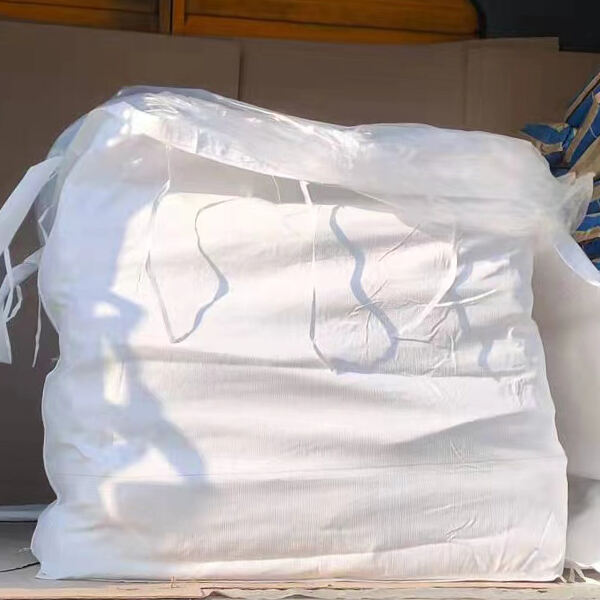There is one type of plastic that we see everywhere in our lives, and this is Polyvinyl Chloride, or PVC. It is a type of material that we all have seen and it lasts for really long time in each case as we used to, this plastic(CType-8). There are so many things that we can used PVC like making toys, clothes or part of buildings. In this guide, we are going to know all about PVC: what it is and how it's made, where do we use them, the impact on our environment and safety measures while handling.
PVC ဆိုတာ ဘာလဲ
PVC, a type of plastic made with the use of ethylene and chlorine; When softened with plasticizers and fillers, these two chemicals are used to produce a PVC hard or soft material in different processes. This makes Pvc-sg-1 by Richest Group very flexible or solid. The other advantage of this PVC material is that it does not damage easily in water, chemicals. or any bad weather condition. Thus is perfect for outdoor stuff that has to endure a long time. Being lightweight makes it easy to mold and shape, so many people enjoy using EPS.
How Is PVC Made and Used?
PVC is a gas (vinyl chloride) converted to solid plastic by polymerization The gas is very toxic and flammable so please be safe when making PVC. Across the manufacturing process, many safety measures are implemented to keep workers is actually secure from harm. PVC is found in many places, housing construction automotive hospitals food packaging For example, it can be used in construction to produce plumbing pipes and windows. Lines For Buildings. For items like car dashboards and seat covers Pvc-sg-3 can be found in many of the products we depend upon every day: automotive parts, credit cards, PVC cement and pipe, wire insulation for building construction. It has been used as a substitute to traditional rubber with flexible applications including blood bags and tubing (I.V.). While, for food it is usually used to create shrink wrap that helps keep our food fresh.
Everyday Uses of PVC
PVC can be found in so many of the things we use something everyday you probably would not realize. Here are some common uses:
Apparel: For the lover of clothing, PVC is responsible for our rain wear and cute jackets that just keep us dry.
Toys: PVC makes great toys, in the form of dolls, balls and building blocks; items loved by children everywhere.
Flooring- for the floor tile PVC is using and this looks great on our home equally to easy clean.
In Electrical Wiring: PVC coats the wires especially where it gets in contact with people so as to not give electrical shocks.
Possesiions: In most homes, PVC chairs and tables are the common furniture available that offer durability and utmost comfort.
Environmental Effects of PVC
While PVC is beneficial in many aspects, it can have equally adverse effects on the environment as well. The first is that PVC does not decompose in the environment (although this it true for petrochemical based plastics, there certainly are other materials which will also remain Undecompsed), This means that when we discard it, can last thousands of years in landfills. In addition to that, Pvc-k72-74 can release dangerous chemicals if it is ignited which I think not a good idea for the environment specially your air. Making PVC in the first place can also produce environmentally hazardous waste. But there are some companies that have tried better than Earth. They are striving for a better world by powering their factories with cleaner energy and recycling PVC so that less goes to dump sites.
New Ideas in PVC
We keep making PVC differently and better all the time. Innovation is driving improved and more secure products. For instance, bio-PVC is made from corn or sugarcane instead of oil. Which makes it greener. There is also PVC coated material with antimicrobial agents, making it very convenient for medical and hospital use so that bacteria don't grow over the surface.
Staying Safe with PVC
It is very important for the safety measures that we have to take care of ourselves when using PVC. It emits toxic fumes when heated and is best used in areas that receive good airflow. It is a good idea to wear protective gear (e. g. gloves, googles and masks) in order not to get harmed. RESPONSIBLE STORAGE AND DISPOSAL: We must never forget that the production, use and disposal of PVC may have adverse effects on both our health land environment in case its uncontrolled discharge occurs.

 EN
EN
 AR
AR
 NL
NL
 FR
FR
 DE
DE
 EL
EL
 HI
HI
 IT
IT
 JA
JA
 KO
KO
 PL
PL
 PT
PT
 RO
RO
 RU
RU
 ES
ES
 TL
TL
 ID
ID
 UK
UK
 VI
VI
 SQ
SQ
 MT
MT
 TH
TH
 TR
TR
 FA
FA
 AF
AF
 MS
MS
 SW
SW
 KA
KA
 UR
UR
 BN
BN
 LO
LO
 NE
NE
 SO
SO
 TA
TA
 ZU
ZU
 MY
MY
 KK
KK
 SI
SI
 TG
TG
 KU
KU
 XH
XH






